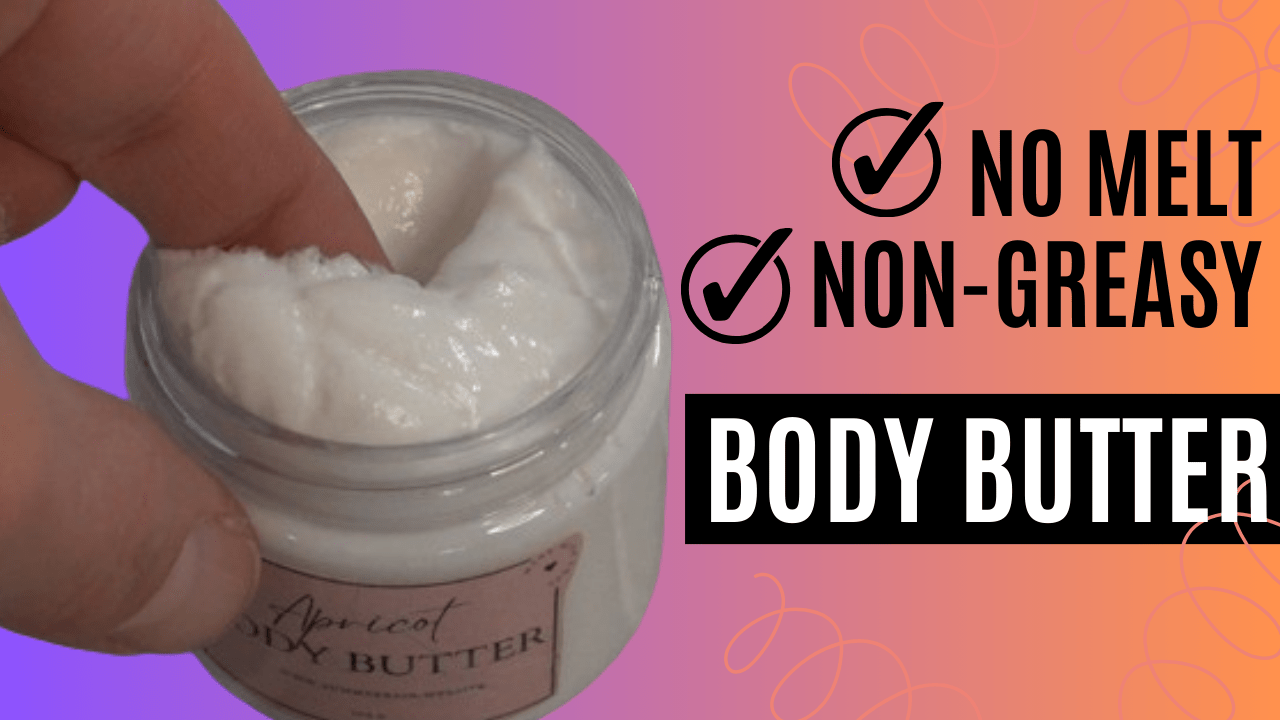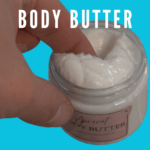Welcome, skincare enthusiasts! Today, we’re diving into the wonderful world of DIY skincare with a focus on creating your very own emulsified body butter cream. What makes this particular concoction so special? Well, let’s talk about it.
Have you ever experienced the disappointment of reaching for your favorite body butter on a scorching summer day, only to find it melted into a gooey mess? Fear not! The beauty of an emulsified body butter is that it maintains its creamy texture even in the hottest of weather. That’s right – no more worries about your skincare essentials turning into a puddle on your dresser.
In this post, I’ll walk you through the step-by-step process of crafting your own emulsified body butter cream. From selecting the perfect blend of oils and butters to incorporating essential emulsifiers, we’ve got you covered. So, grab your apron and let’s get started on this skincare DIY adventure!
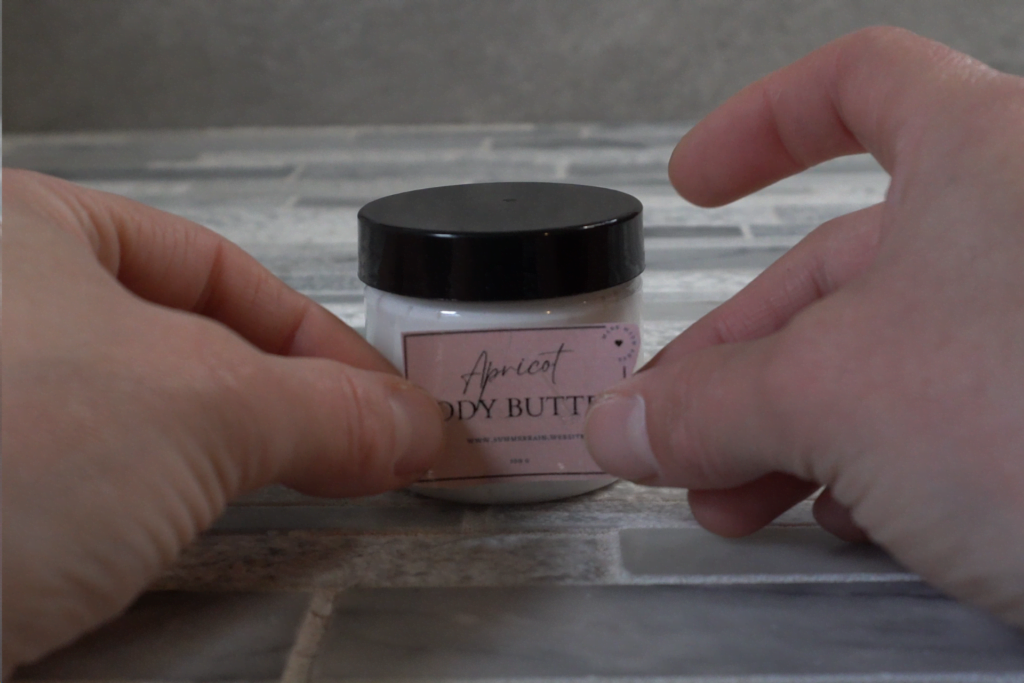
Table of Contents
Prefer to watch this project instead of reading it?
Certain links on this website are affiliate links, as I am an associate. Clicking on these links and making a purchase may earn me a small commission. Rest assured, there is no extra cost to you.
Oils and Butters:
Sweet Almond Oil
Sweet almond oil is a versatile and nourishing oil that serves as a foundational ingredient in my emulsified body butter cream. Let’s explore its benefits and potential substitutions:
Benefits of Sweet Almond Oil:
Moisturizing Properties: Sweet almond oil is rich in fatty acids, including oleic and linoleic acids, which deeply hydrate and nourish the skin. It helps to lock in moisture, leaving the skin soft and supple.
Lightweight Texture: This oil has a light and non-greasy texture, making it suitable for all skin types, including sensitive and oily skin. It absorbs quickly into the skin without clogging pores.
Rich in Vitamins and Antioxidants: Sweet almond oil is packed with vitamins E and A, as well as antioxidants, which help to protect the skin from environmental damage and promote overall skin health.
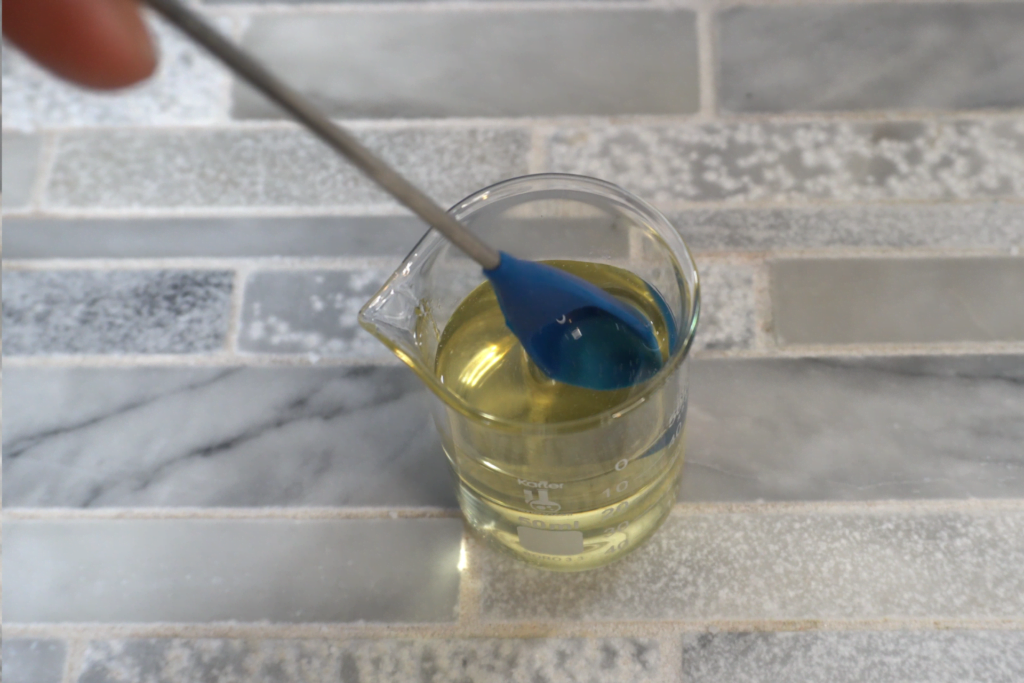
Substitutions for Sweet Almond Oil:
Jojoba Oil: Jojoba oil shares similar moisturizing properties with sweet almond oil and has a lightweight texture. It’s an excellent alternative for those with nut allergies.
Apricot Kernel Oil: Apricot kernel oil is another light and moisturizing oil that can be used as a substitute. It’s rich in vitamins and suitable for sensitive skin.
Grapeseed Oil: Grapeseed oil is lightweight and non-comedogenic, making it ideal for oily or acne-prone skin. It absorbs quickly and helps to balance the skin’s natural oil production.
Shea Butter
Shea butter is a luxurious and deeply nourishing ingredient that plays a key role in my emulsified body butter cream. Let’s explore its benefits and potential substitutions:
Benefits of Shea Butter:
Intense Hydration: Shea butter is highly moisturizing and contains fatty acids that help to replenish the skin’s natural moisture barrier. It deeply hydrates the skin, making it soft and supple.
Rich in Vitamins: Shea butter is packed with vitamins A, E, and F, which nourish the skin and promote overall skin health. These vitamins help to protect the skin from environmental damage and signs of aging.
Anti-inflammatory Properties: Shea butter has anti-inflammatory properties that can help soothe irritated skin conditions such as eczema and psoriasis. It also helps to reduce redness and inflammation.
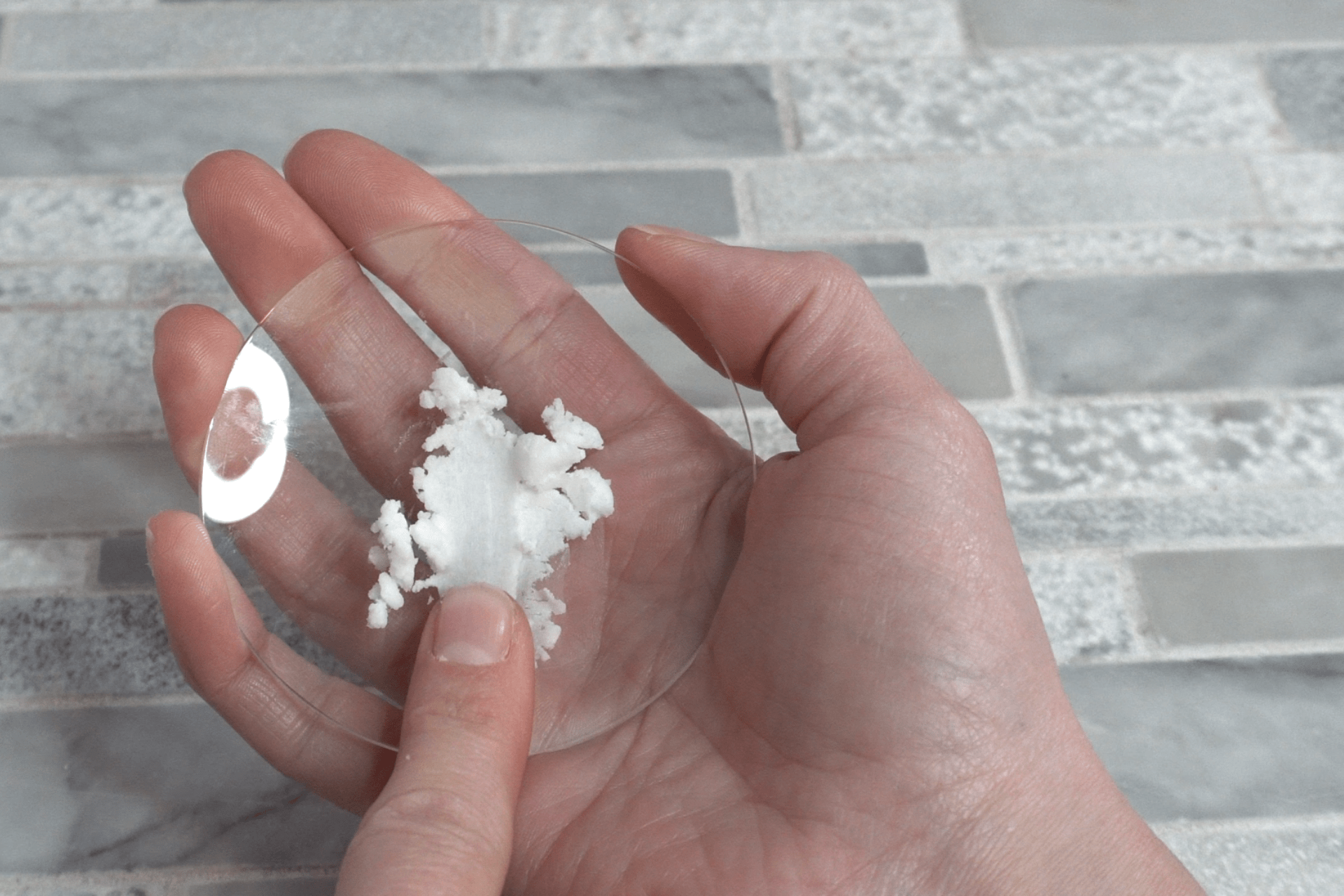
Substitutions for Shea Butter:
Mango Butter: Mango butter is a luxurious alternative to shea butter with similar moisturizing properties. It is rich in antioxidants, vitamins, and minerals, and has a slightly lighter texture compared to shea butter. It is an excellent choice for whipped body butter formulations.
Kokum Butter: Kokum butter is another alternative to shea butter that offers moisturizing and anti-inflammatory properties. It has a firm texture at room temperature but melts easily on contact with the skin, leaving it soft and hydrated.
Cocoa Butter
Cocoa butter is a rich and velvety ingredient that adds luxurious moisture to my emulsified body butter cream. Let’s explore its benefits and potential substitutions:
Benefits of Cocoa Butter:
Deep Moisturization: Cocoa butter is highly emollient, sinking deep into the skin to provide long-lasting hydration. It helps to soften and smooth dry, rough patches, leaving the skin supple and moisturized.
Rich in Antioxidants: Cocoa butter is packed with antioxidants, including polyphenols and flavonoids, which help to protect the skin from environmental stressors and free radical damage. This can contribute to a more youthful and radiant complexion.
Improves Skin Elasticity: Regular use of cocoa butter can help improve skin elasticity, making it more resilient and less prone to stretch marks and fine lines. It promotes collagen production and enhances the skin’s overall firmness.
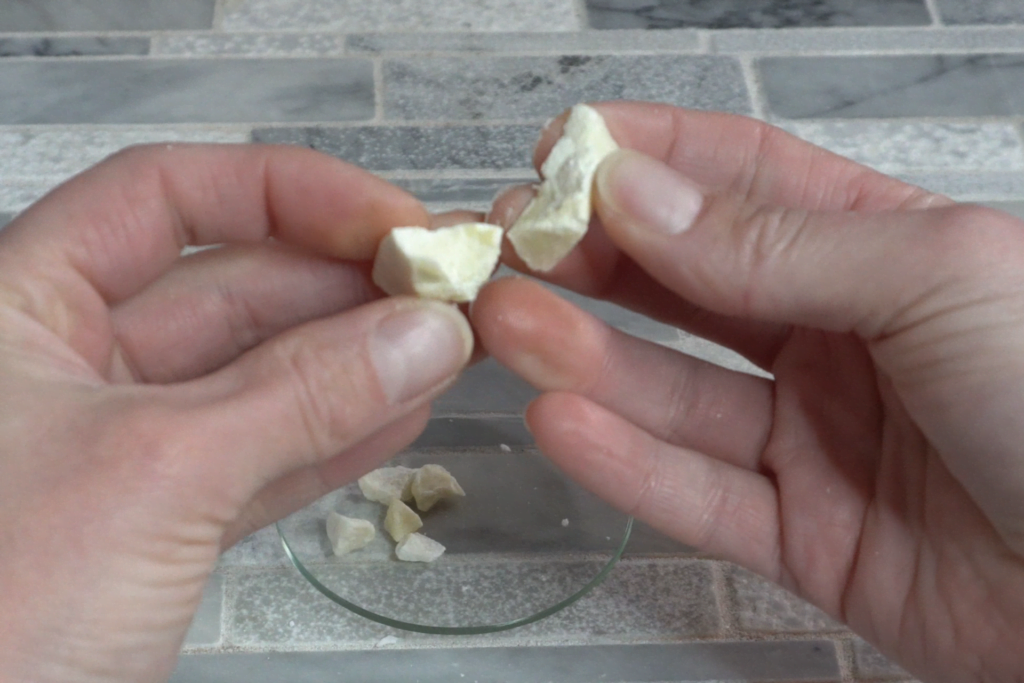
Substitutions for Cocoa Butter:
You can use the substitutions listed previously. However, the formula will be a little lighter as cocoa butter is a very hard and brittle butter. This adds to the thickness of the formula.
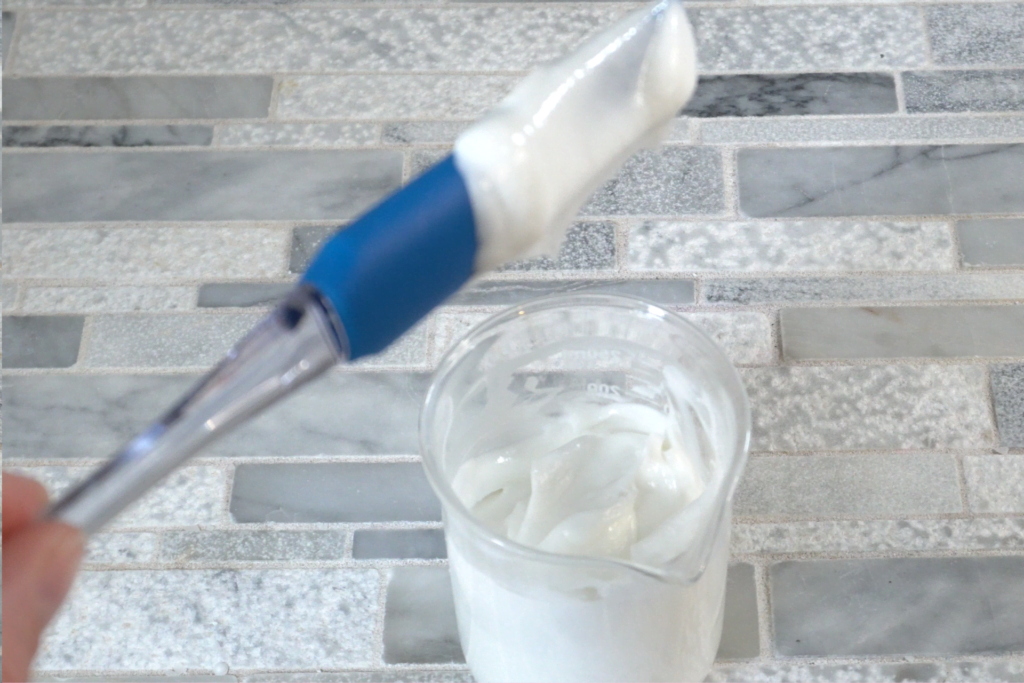
Emulsifying Wax
Emulsifying wax plays a crucial role in skincare formulations, particularly in creating luxurious whipped body butter. Let’s delve into its benefits:
Emulsion Stability: Emulsifying wax acts as a stabilizer, ensuring that the water and oil-based ingredients in the body butter remain evenly dispersed. Without emulsifying wax, these ingredients would separate over time, resulting in an inconsistent texture and potentially compromising the effectiveness of the product. By incorporating emulsifying wax, we can create a stable emulsion that maintains its creamy consistency throughout the product’s shelf life.
Enhanced Texture: Emulsifying wax contributes to the smooth and creamy texture of the body butter. It helps to emulsify the oils and butters with the water phase, creating a luxurious and velvety consistency that glides effortlessly onto the skin. This ensures a pleasant application experience and promotes even distribution of moisturizing ingredients, leaving the skin feeling soft and nourished.
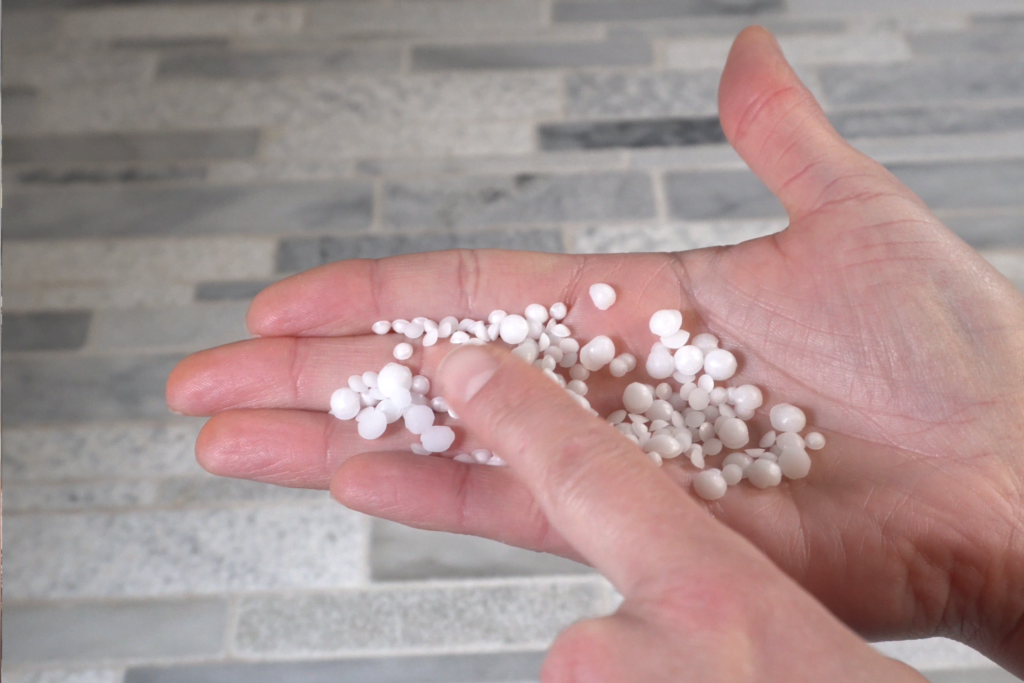
Ease of Formulation: Emulsifying wax simplifies the formulation process by providing a single ingredient solution for creating emulsions. Unlike traditional methods that may require complex blending techniques or additional emulsifiers, emulsifying wax streamlines the process, making it more efficient and accessible for DIY skincare enthusiasts. Its versatility allows for the creation of a wide range of skincare products, from lotions and creams to body butters and balms.
Compatibility: Emulsifying wax is compatible with a variety of cosmetic ingredients, making it suitable for formulating diverse skincare products. Whether incorporating water-soluble additives like hyaluronic acid or oil-soluble botanical extracts, emulsifying wax ensures compatibility and stability within the formulation. This versatility allows for the customization of body butter recipes to address specific skincare concerns and preferences.
Overall, emulsifying wax is an essential ingredient in creating luxurious whipped body butter. Its ability to stabilize emulsions, enhance texture, simplify formulation, and ensure compatibility makes it a valuable component in skincare formulations, resulting in a product that delivers indulgent moisture and nourishment to the skin.
Cetyl Alcohol
Cetyl alcohol serves as a crucial ingredient in our emulsified body butter cream, working in tandem with water to enhance its texture and stability. Let’s explore the benefits that cetyl alcohol brings to the formula.
Although technically classified as a lotion due to the inclusion of water, a high percentage of oils is used to retain the nourishing benefits typically associated with body butter. This strategic formulation choice allows for the delivery of intense hydration and moisturization expected from a body butter while maintaining the ease of application and spreadability of a lotion.
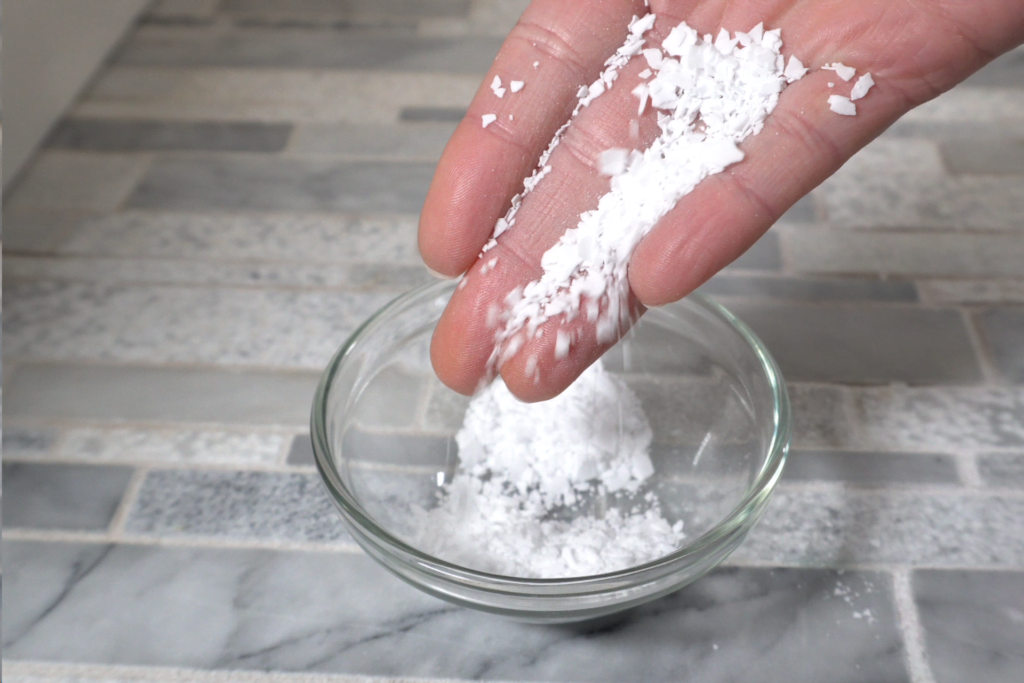
Texture Enhancement: Cetyl alcohol acts as an emollient and emulsifier, imparting a smooth and creamy texture to the body butter. It helps to create a rich and luxurious consistency that glides effortlessly onto the skin, providing a pampering experience with every application. By incorporating cetyl alcohol alongside water, the body butter feels decadently soft and velvety, enhancing its overall sensory appeal.
Stability Improvement: In addition to its texture-enhancing properties, cetyl alcohol plays a crucial role in stabilizing the emulsion within the body butter. Emulsions, which are mixtures of water and oil-based ingredients, can separate over time if not properly stabilized. By using cetyl alcohol along with water, a robust emulsion is created that resists separation and maintains its creamy consistency over time. This ensures that the body butter remains stable and homogeneous, delivering consistent results with each use.
Consistent Results: This formulation deviates from traditional body butter recipes. Unlike conventional body butters, which may melt in hot temperatures or become gritty in cold weather, the emulsified body butter with cetyl alcohol stays intact. It won’t melt in the scorching sun or freeze up in the winter chill, providing reliable performance year-round. This innovative approach ensures that users can enjoy the benefits of the body butter without worrying about changes in its texture or effectiveness due to environmental factors.
Vegetable Glycerin
Vegetable glycerin is a versatile and beneficial ingredient often added to the water phase of skincare formulations, including emulsified body butter. Let’s explore its benefits and role in enhancing the performance of our DIY body butter cream:
Hydration and Moisture Retention: Vegetable glycerin is a humectant, meaning it attracts moisture from the environment and binds it to the skin. When incorporated into the water phase of our body butter formula, it helps to hydrate and soften the skin, leaving it feeling moisturized and supple.
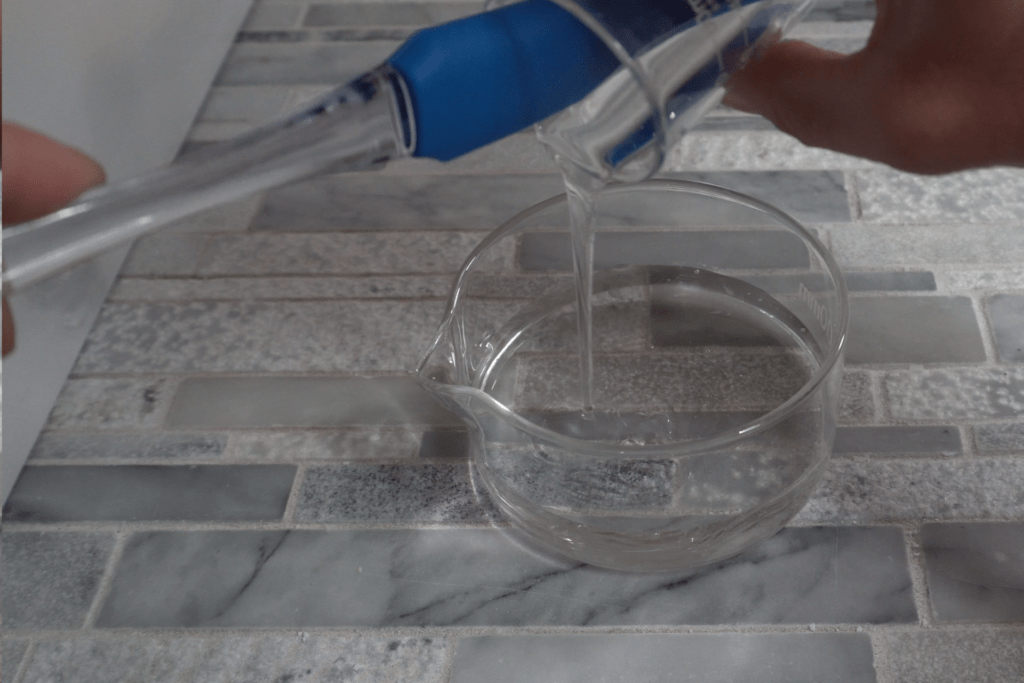
Skin Barrier Support: By attracting moisture to the skin’s surface, vegetable glycerin helps to fortify the skin’s natural barrier function. This helps to prevent moisture loss and protect the skin from external aggressors, such as harsh weather conditions and environmental pollutants.
Enhanced Texture and Spreadability: Vegetable glycerin also contributes to the overall texture and spreadability of our emulsified body butter cream. It helps to create a smooth and creamy consistency that glides effortlessly onto the skin, ensuring even distribution of moisturizing ingredients for maximum effectiveness.
Soothing and Comforting: In addition to its hydrating properties, vegetable glycerin has soothing and comforting effects on the skin. It can help to alleviate dryness, itching, and irritation, making it especially beneficial for those with sensitive or compromised skin conditions.
Distilled Water
Distilled water serves as the base of the water phase in our emulsified body butter formula. Its purity and lack of impurities make it an ideal choice for skincare formulations. Let’s explore its role and benefits in our DIY body butter cream:
Purity: Distilled water undergoes a process of distillation, which removes impurities and contaminants, leaving behind pure H2O. This purity ensures that our body butter formulation remains free from any potentially harmful substances that could irritate or sensitise the skin.
Hydration: As the primary component of the water phase, distilled water provides essential hydration to the skin. It penetrates the skin’s surface, delivering moisture deep into the epidermal layers, where it helps to maintain optimal hydration levels and support overall skin health.
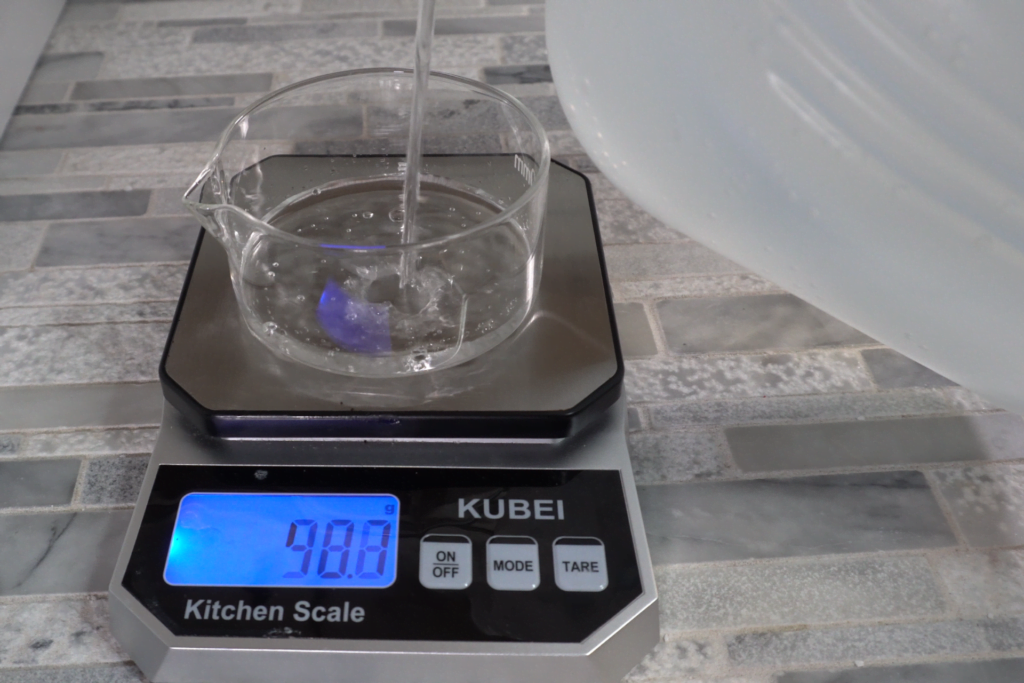
Ingredient Compatibility: Distilled water is compatible with a wide range of cosmetic ingredients, including emulsifiers, preservatives, and active botanical extracts. Its neutral pH and lack of minerals make it an excellent solvent for dissolving and dispersing other skincare ingredients, ensuring uniform distribution throughout the body butter formulation.
Texture and Consistency: Distilled water contributes to the light and refreshing texture of our emulsified body butter cream. It helps to create a smooth and easily spreadable formula that absorbs quickly into the skin without leaving a greasy or sticky residue behind.
Overall, distilled water plays a crucial role in our DIY body butter recipe, providing hydration, purity, and ingredient compatibility. By incorporating this essential component into the water phase of our formulation, we ensure that our emulsified body butter delivers optimal moisturization and nourishment to the skin, leaving it feeling soft, smooth, and rejuvenated.
Cool Down Ingredients
Preservative
To maintain the freshness and safety of our emulsified body butter, it’s essential to include a broad-spectrum preservative. In this formulation, I’ve chosen to use Germall Plus, a reliable and effective preservative that helps prevent the growth of bacteria, mold, and yeast in water-based products. Germall Plus is a commonly used preservative in skincare formulations, known for its broad-spectrum protection and compatibility with a wide range of cosmetic ingredients. By incorporating Germall Plus into our body butter recipe, we ensure its stability and minimize the risk of microbial contamination, allowing you to enjoy the product with peace of mind.
Fragrance
To enhance the sensory experience of using our emulsified body butter, we include a carefully selected fragrance oil. Fragrance oils add delightful scents to skincare products, creating a luxurious and indulgent aroma that lingers on the skin. Fragrance oil options range from floral and fruity to exotic and woody. This allows you to choose the scent that best suits your preferences. In this formulation, I’ve opted for a Juicy Apricot Fragrance Oil. It exudes a mouthwatering aroma of ripe apricots complemented by sweet notes of peach, banana, jasmine, and white lily. The sugary vanilla base note adds an irresistibly sweet and fruity scent, evoking the essence of summer. However, you can customize your body butter by using any fragrance oil of your choice or leave it unscented if you prefer a fragrance-free option.
Steps to Make the Body Butter:
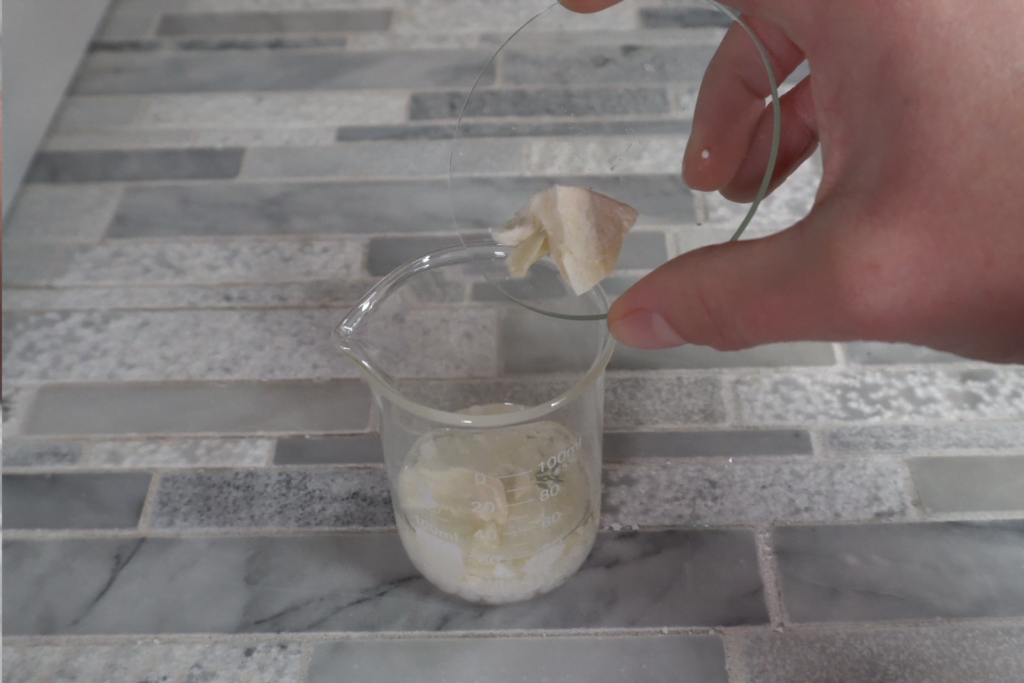
Measure and Melt Ingredients:
Begin by measuring out the oils, butters, emulsifying wax, and cetyl alcohol required for your body butter recipe. Place these ingredients in a heat-safe container or double boiler and melt them gently until fully liquid. Stir occasionally to ensure even melting and prevent scorching.
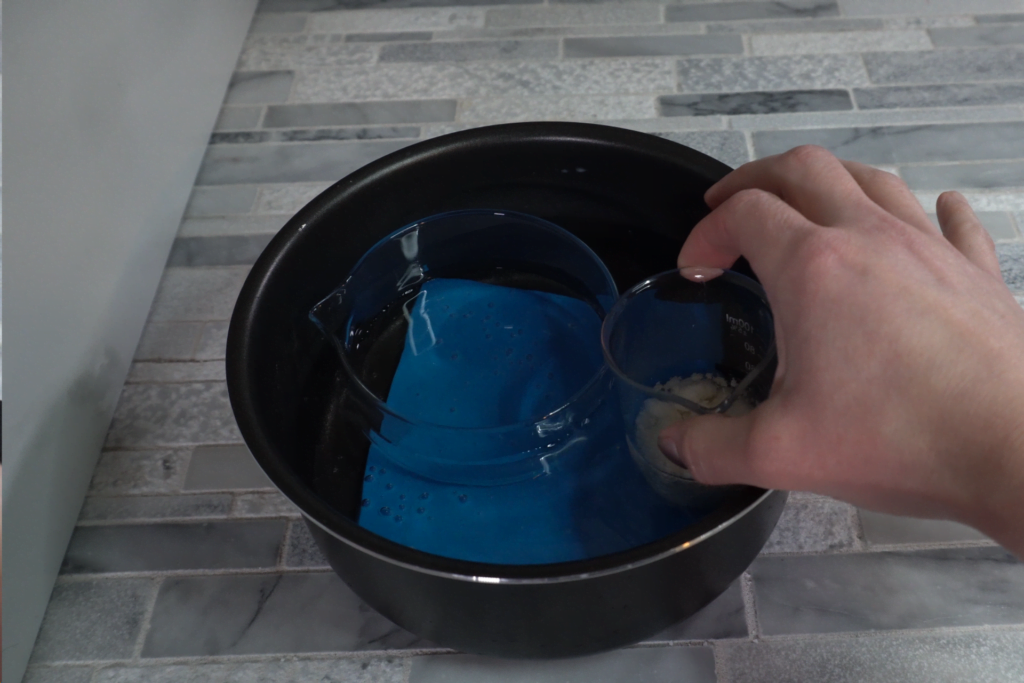
Heat the Water Phase:
While the oils and butters are melting, heat the water phase separately. Use distilled water mixed with vegetable glycerin and warm it to a similar temperature as the oil phase. This ensures that both phases are at a comparable temperature when they are combined, promoting proper emulsification.
Combine Oil Phase and Water Phase:
Once both phases are heated and fully liquid, carefully pour the water phase into the container with the melted oils and butters. Use caution to avoid splashing or spilling.
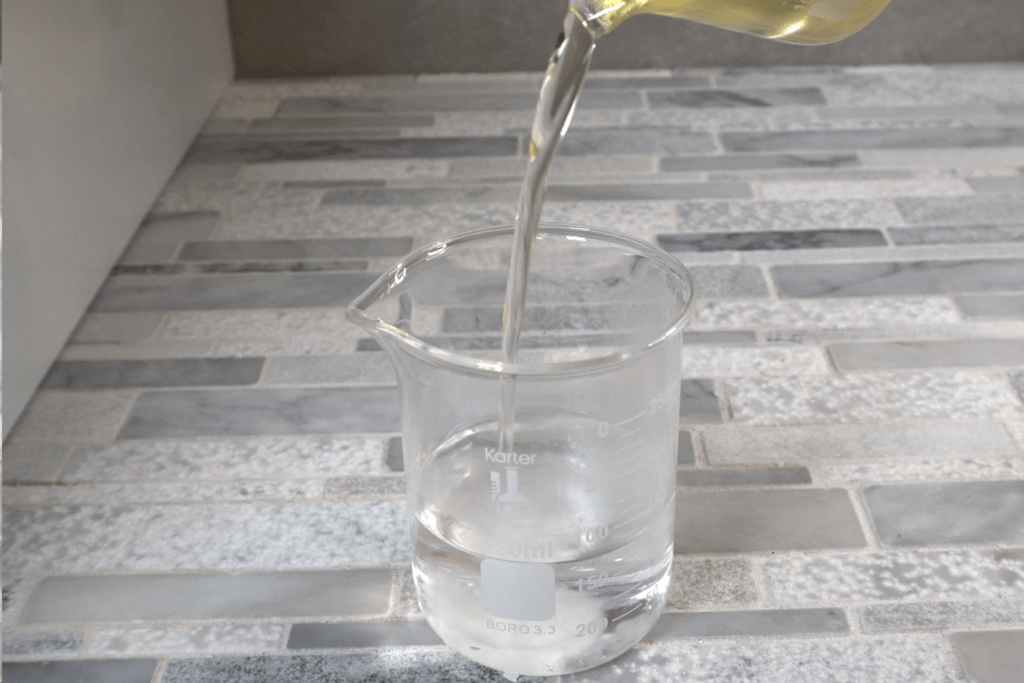
Blend with Immersion Blender:
Using an immersion blender, blend the oil phase and water phase together thoroughly. Continue blending until you achieve a smooth and creamy consistency. This step is crucial for emulsifying the water and oil-based ingredients into a homogeneous mixture.
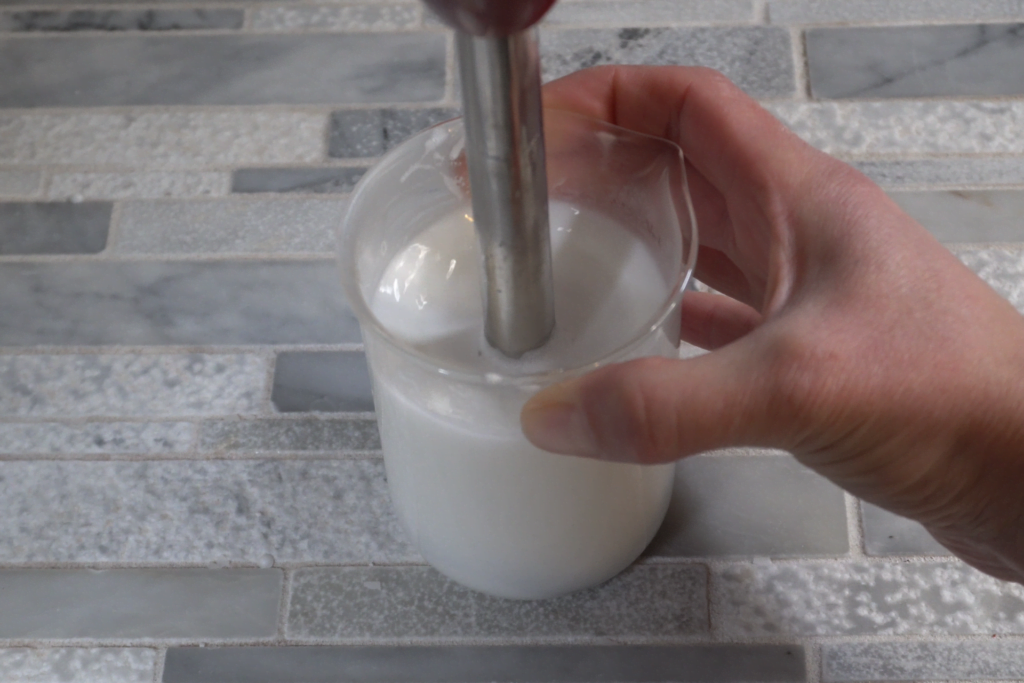
Add Cool Down Ingredients:
After blending, it’s time to add any cool-down ingredients, such as fragrance oil and preservative. Measure out the appropriate amounts of these ingredients and incorporate them into the body butter mixture. Stir gently to ensure even distribution.
Optional:
Add Colorants: If desired, this is the time to add any colorants to customize the appearance of your body butter. Choose cosmetic-grade colorants and add them slowly until you achieve the desired hue. Mix thoroughly to evenly distribute the color throughout the mixture.
Pipe Into Containers:
Once all ingredients are fully incorporated, transfer the body butter mixture into piping bags or containers of your choice. Use a spatula or piping tip to fill the containers neatly and avoid air bubbles.
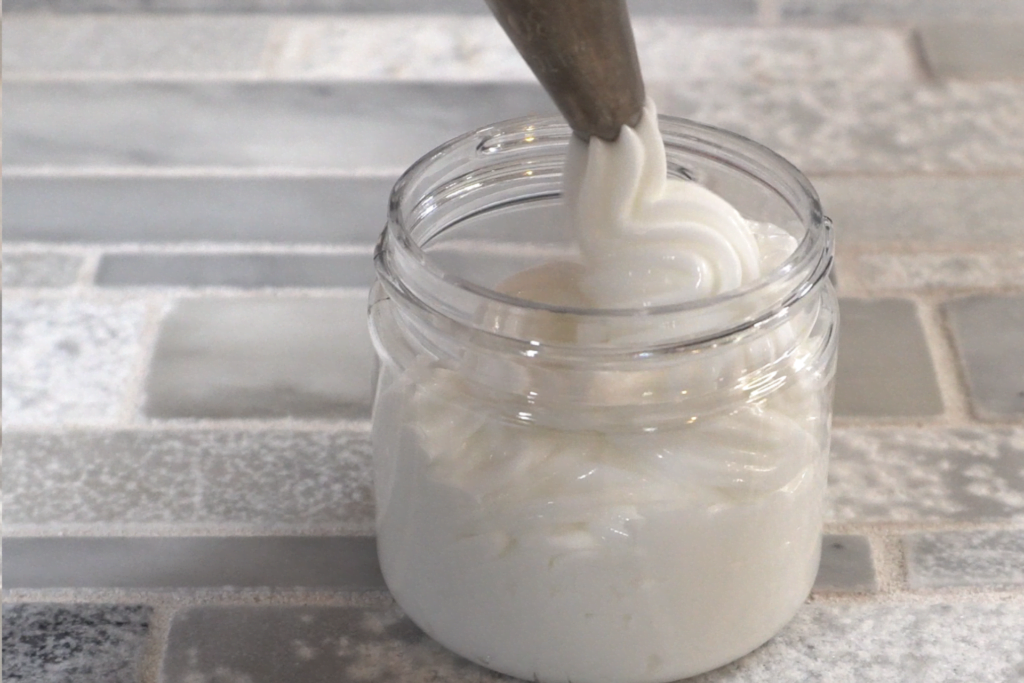
Printable Label – 100 gram container
DIY Whipped Body Butter – Make Luxurious, Fluffy, and Creamy Body Butter at home
Equipment
- Scale
Ingredients
Oil Phase
- 8 grams | 4% Emulsifying Wax
- 12 grams | 6% Cetyl Alcohol
- 40 grams | 20% Sweet Almond Oil
- 6 grams | 3% Shea Butter
- 4 grams | 2% Cocoa Butter
Water Phase
- 105 grams | 52.5% Distilled Water
- 20 grams | 10% Vegetable Glycerin
Cool Down
- 1 grams | 0.5% Germall Plus
- 4 grams | 2% Juicy Apricot Fragrance Oil
Instructions
Measure and Melt Ingredients:
- Begin by measuring out the oils, butters, emulsifying wax and cetyl alcohol required for your body butter recipe. Place these ingredients in a heat-safe container or double boiler and melt them gently until fully liquid. Stir occasionally to ensure even melting and prevent scorching.
Heat the Water Phase:
- While the oils and butters are melting, heat the water phase separately. Place distilled water mixed with vegetable glycerin and warm it to a similar temperature as the oil phase.
Combine Oil Phase and Water Phase:
- Once both phases are heated and fully liquid, carefully pour the water phase into the container with the melted oils and butters. Use caution to avoid splashing or spilling.
Blend with Immersion Blender:
- Using an immersion blender, blend the oil phase and water phase together thoroughly. Continue blending until you achieve a smooth and creamy consistency. This step is crucial for emulsifying the water and oil-based ingredients into a homogeneous mixture.
Add Cool Down Ingredients:
- After blending, it's time to add any cool-down ingredients, such as fragrance oil and preservative. Measure out the appropriate amounts of these ingredients and incorporate them into the body butter mixture. Stir gently to ensure even distribution.
Optional:
- Add Colorants: If desired, this is the time to add any colorants to customize the appearance of your body butter. Choose cosmetic-grade colorants and add them slowly until you achieve the desired hue. Mix thoroughly to evenly distribute the color throughout the mixture.
Pipe Into Containers:
- Once all ingredients are fully incorporated, transfer the body butter mixture into piping bags or containers of your choice. Use a spatula or piping tip to fill the containers neatly and avoid air bubbles.
